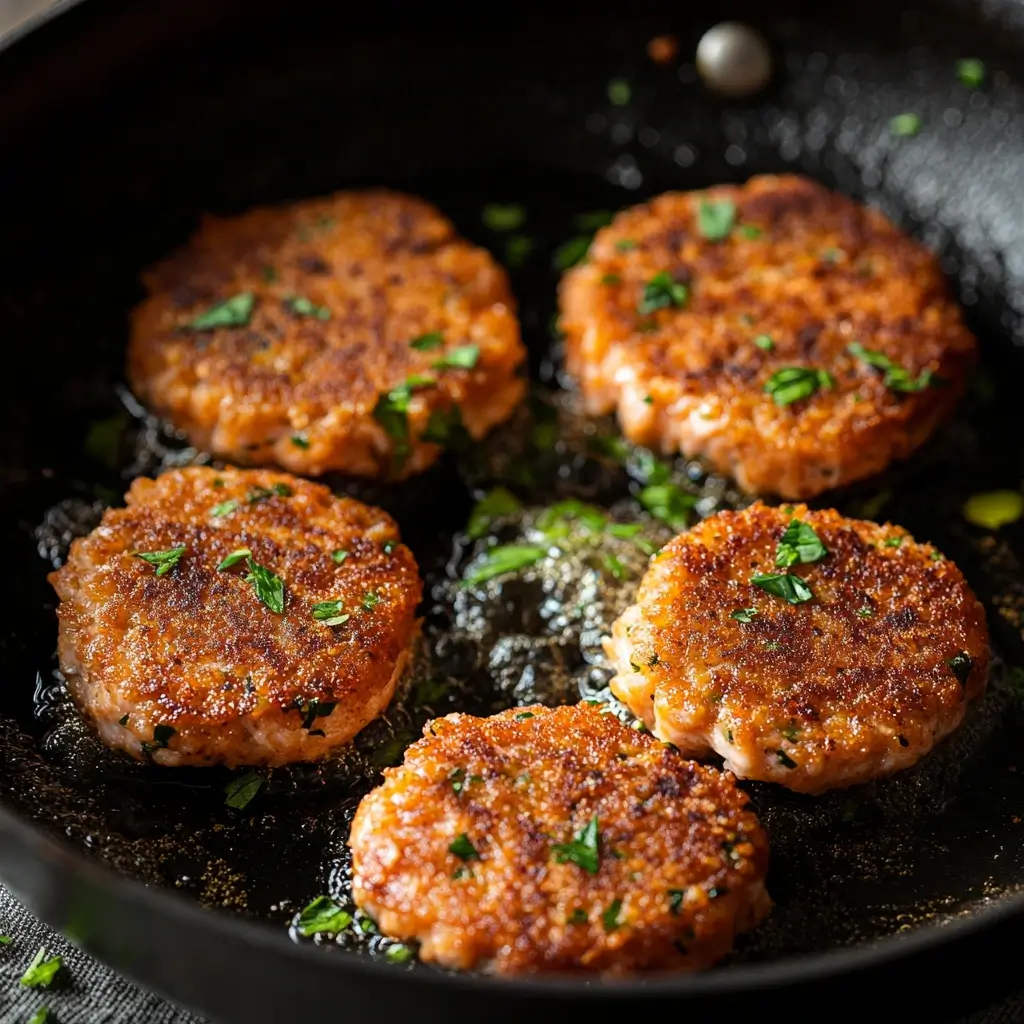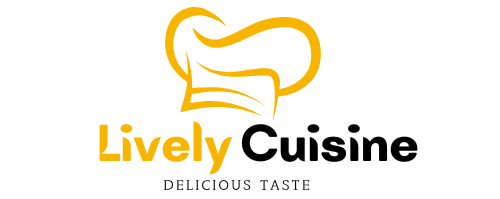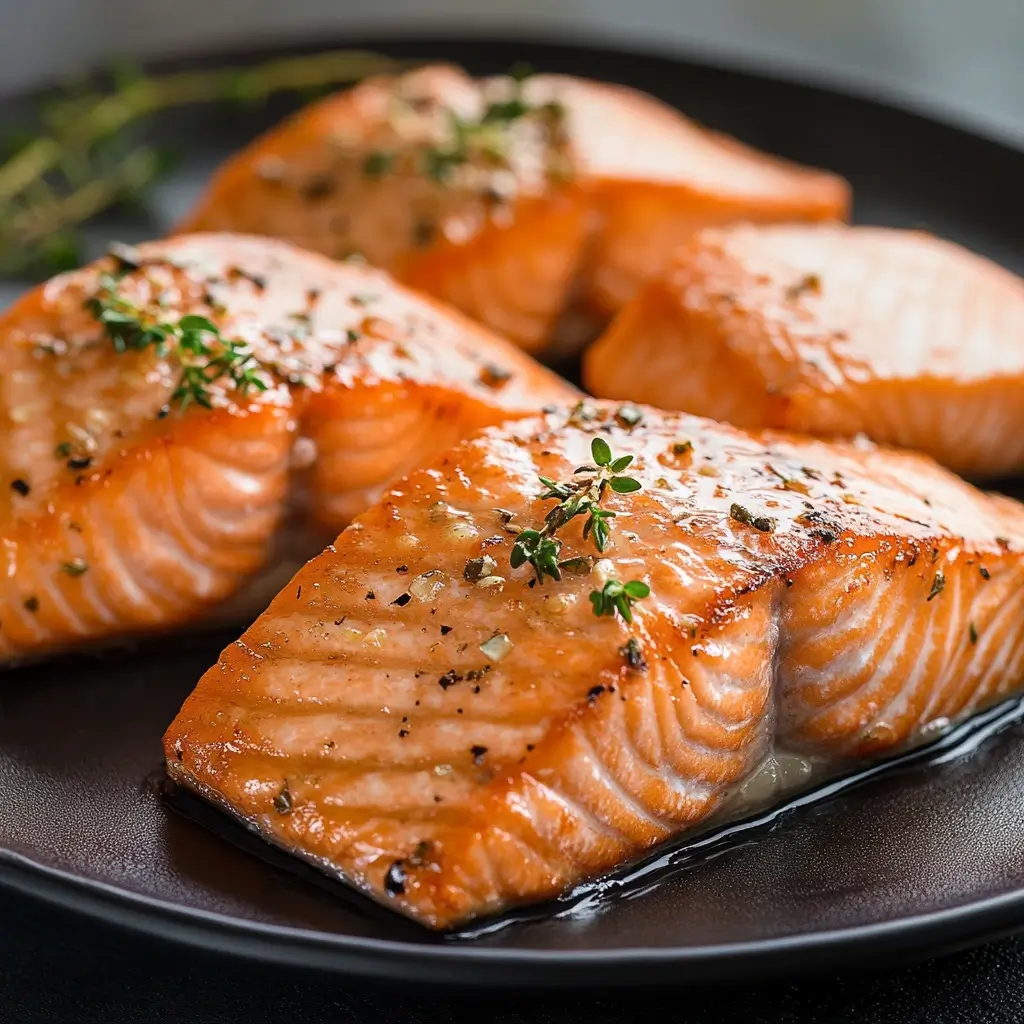Craving a quick, protein-packed meal without the fuss of cooking fresh fish? Canned salmon might just be your new pantry hero. Whether you’re aiming for a healthy lunch, a budget-friendly dinner, or something in between, this versatile food is making a major comeback—and for good reason.
In this guide, we’ll dive deep into everything you need to know about canned salmon: from its nutrition and the best brands to delicious recipes and how to choose the right one for your lifestyle. We’ll also touch on sustainability, expert tips, and answer some of the most common questions people have (yep, including whether you can eat it straight from the can). Let’s dive in!
What is Canned Salmon?
Understanding Canned Salmon
Let’s start with the basics. Canned salmon is, well, just that—salmon preserved in a can, usually with added water, oil, or its own juices. What makes it special is its sheer convenience. No need to thaw or cook anything. You pop the lid, and it’s ready to go.
There are typically two popular varieties you’ll see on shelves: pink salmon and sockeye salmon. Pink is lighter in taste and texture—perfect for salads or patties. Sockeye, on the other hand, is richer, darker, and has a more pronounced flavor. Some cans include the skin and bones (packed with calcium), while others are fully boneless and skinless. Both have their perks—it really comes down to personal preference.
Tinned salmon is often overlooked next to tuna, but it’s high time it got the spotlight. It’s an omega-3 rich fish, high in protein, and loaded with nutrients that your body will thank you for. Plus, it’s one of the most cost-effective protein sources out there.
How Canned Salmon is Made
Ever wondered what happens between the ocean and your pantry? After being caught—typically wild-caught, especially the good stuff—the salmon is cleaned, prepped, and sealed in cans. It’s then pressure-cooked inside the can, locking in flavor and nutrients.
Because of this method, canned salmon is shelf-stable, meaning you can stock up and store it for months (or even years) without it going bad. And here’s the kicker—it maintains most of the same health benefits as fresh salmon, all without the steep price tag.
Up next: we’ll break down all the amazing health benefits of canned salmon and why it’s not just convenient—but seriously good for you.
Nutritional Benefits of Canned Salmon
Is Canned Salmon Healthy to Eat?
You bet it is. In fact, canned salmon isn’t just healthy—it’s a powerhouse of nutrition packed into a small, affordable package. Loaded with omega-3 fatty acids, it supports heart health, reduces inflammation, and may even help boost your mood. Plus, it’s naturally high in protein, giving your muscles and metabolism exactly what they need to thrive.
One major perk? If the can includes bones (don’t worry—they’re soft and edible), you’re getting a huge dose of calcium, too. That’s right, the same stuff that keeps your bones strong. And let’s not forget vitamin D, selenium, and B vitamins—all naturally occurring in this shelf-stable fish.
Compared to fresh or frozen fillets, canned versions hold up surprisingly well nutritionally. Thanks to the heat-sealing process, most of the nutrients are preserved, making it one of the best cost-effective protein sources on the market.
Health Benefits Backed by Science
Still not sold? Let’s dig a little deeper. Studies have shown that regular consumption of fatty fish, like salmon, may help reduce the risk of heart disease and stroke. The omega-3s in canned salmon also support brain health, and some research even connects them to improved memory and reduced cognitive decline.
If you’re trying to eat clean without breaking the bank, canned salmon fits right into meal planning. It’s low in carbs, naturally gluten-free, and a perfect fit for keto, paleo, and Mediterranean diets. Whether you’re tossing it into a salad or mashing it into patties, you’re fueling your body the smart way.
And the best part? It’s right there in your pantry, ready when you are.
Best Canned Salmon Brands in 2025
Top-Rated Brands According to Experts
With so many options on the shelf, it’s easy to feel overwhelmed. So, what’s the best canned salmon in 2025? According to food experts and registered dietitians, Wild Planet’s Wild Sockeye Salmon is the reigning champ. And it’s not just hype—it’s sustainably caught, boneless, skinless, and known for its clean flavor and firm texture.
Another solid pick? Safe Catch Wild Pink Salmon. What sets this one apart is its rigorous mercury testing. Each batch is tested to ensure safety, making it a great option for folks concerned about contaminants.
Bumble Bee and Chicken of the Sea remain wallet-friendly go-tos. Though they might include skin and bones, these parts add calcium and a richer flavor. And if you’re looking for something fancy, Vital Choice offers premium sockeye with a buttery finish.
What Makes a Brand Stand Out
Not all cans are created equal. The best brands check three key boxes: sustainability, quality, and taste. Look for labels that say wild-caught, and scan for certifications like MSC (Marine Stewardship Council). These tell you the fish was sourced with the planet in mind.
Texture matters, too. Nobody wants mushy fish. Top-tier brands ensure their salmon holds up—flaky, firm, and flavorful. Boneless and skinless versions are more convenient, but those tiny bones and bits of skin are actually nutrient-dense.
Transparency also goes a long way. Trustworthy companies are upfront about sourcing, mercury levels, and even the type of salmon in the can (hello, sockeye, pink, or coho). Bottom line? When it comes to choosing the best canned salmon, reading the label is everything.

How to Choose the Best Canned Salmon for You
Key Factors to Consider When Buying
Not all canned salmon is created equal. So, what should you look for when standing in front of a dozen different cans at the store? First off, check whether it’s wild-caught or farmed. Wild-caught salmon tends to be lower in contaminants and richer in nutrients, especially those precious omega-3s.
Next up: the type of salmon. Sockeye has bold flavor and deep color, while pink salmon is milder and softer. Neither is “better”—it depends on your taste and how you’ll use it. If you’re aiming for salmon patties or croquettes, pink might blend more easily. For salads or a cold platter, sockeye shines.
Look for BPA-free cans if you’re trying to reduce chemical exposure. And while you’re there, peek at the sodium content—some brands are saltier than others.
Tips from Nutritionists and Chefs
Many nutrition pros agree: when buying canned salmon, aim for clean labels. Fewer ingredients mean fewer additives. Ideally, the only things listed should be salmon, salt, and water or oil.
Chefs often prefer skinless and boneless versions for ease, but don’t count out the ones with bones. Those tiny, soft bones are full of calcium and practically melt into the dish.
Pro tip? Stock up when it’s on sale. It keeps for years and works in countless dishes—from tacos to pasta to hearty grain bowls. The right can can make healthy eating a whole lot easier.
How to Use Canned Salmon in Everyday Cooking
Can I Eat Canned Salmon Out of the Can?
Absolutely—you can eat canned salmon straight from the tin. It’s fully cooked during the canning process, so it’s ready to eat cold, room temperature, or warmed up. Just drain it (unless you like it a little juicy), and you’re good to go.
Many people enjoy it plain or tossed with a little lemon juice, cracked pepper, and olive oil. It’s a quick and protein-packed snack that requires zero cooking. For those who don’t mind bones and skin, give them a try—they add richness and extra nutrients.
That said, while it’s tasty straight up, there are countless ways to jazz it up with minimal effort.
Easy Meal Ideas Using Canned Salmon
Let’s talk versatility. This pantry staple works with everything—from cozy comfort food to light and bright dishes.
- Salmon Patties: Mix canned salmon with breadcrumbs, egg, garlic, and herbs. Form into patties and pan-fry for crispy, golden goodness.
- Quick Pasta Toss: Add flaked salmon to cooked pasta with olive oil, capers, lemon zest, and spinach for a 10-minute meal.
- Grain Bowls: Top rice or quinoa with salmon, avocado, pickled onions, and a drizzle of tahini or sriracha mayo.
- Wraps & Sandwiches: Mash it with a little Greek yogurt or mayo, toss in chopped celery or onions, and you’ve got yourself a salmon salad sandwich that rivals any deli.
Need breakfast inspo? Stir some into scrambled eggs with goat cheese. It’s a little fancy, super filling, and takes less than 10 minutes.
Canned Salmon Recipes for All Levels
Simple Recipes to Start With
If you’re new to using canned salmon, don’t worry—starting is easier than you think. You don’t need to be a gourmet chef to whip up something tasty. In fact, with just a few pantry staples, you can have a hearty meal on the table in no time.
One of the easiest dishes? A 3-ingredient salmon salad. Just mash up canned salmon with mayo and a squeeze of lemon. Add salt and pepper to taste, and you’ve got a satisfying lunch that pairs great with crackers or sandwich bread.
Another go-to is canned salmon pasta. Cook some spaghetti, stir in flaked salmon, olive oil, garlic, and red pepper flakes. Finish with chopped parsley or a sprinkle of Parmesan. It’s quick, filling, and oh-so flavorful.
Want something low-carb? Toss salmon into a lettuce wrap with cucumber, shredded carrot, and a drizzle of sesame dressing. It’s light, fresh, and perfect for busy days.
Creative Recipes for Foodies
If you’re a bit more adventurous in the kitchen, canned salmon has your back. Try using it in sushi rolls—just mix with a touch of sriracha mayo and wrap it in seaweed and rice for a fun twist.
Feeling fancy? Stuff halved avocados with salmon salad and top with microgreens. It’s as pretty as it is delicious. Or go full comfort mode and stir canned salmon into a homemade mac and cheese for a protein-rich upgrade.
Whether you’re keeping things basic or getting a little wild, there’s no shortage of ways to turn canned salmon into something unforgettable.

Sustainability and Environmental Impact
Why Wild-Caught Matters
Choosing canned salmon isn’t just about flavor—it’s also a decision that can support the planet. Wild-caught salmon, especially those labeled as sustainably sourced, have a lower impact on the environment. Unlike farmed fish, wild-caught varieties typically live in cleaner, more natural habitats and aren’t treated with antibiotics or added dyes.
So, when you see labels like “wild Alaskan” or “MSC-certified,” that’s a good sign. These brands often partner with responsible fisheries that follow ethical and eco-friendly practices.
Not only does wild-caught taste better (hello, richer flavor and firmer texture), but it also helps keep marine ecosystems in balance.
How to Spot Sustainable Canned Salmon
Want to make an eco-conscious choice? Start by checking for logos like the Marine Stewardship Council (MSC) or Seafood Watch recommendations. These certifications mean the salmon was sourced responsibly, without overfishing or harming ocean life.
Also, consider brands that use BPA-free packaging and give details about fishing methods or source locations. Transparency shows they’re committed to doing things right.
Making small choices like these can help preserve fish populations and protect oceans—without giving up the ease and benefits of canned salmon.
FAQs About Canned Salmon
What is Canned Salmon Made Of?
Canned salmon is typically made from whole cuts of wild-caught salmon that are cooked and sealed inside the can. Depending on the brand and style, it might include skin, bones, or just the fillet. While skin adds a richer flavor, the soft, edible bones offer a boost of calcium. Many people are surprised to learn that these bones become almost unnoticeable after cooking.
Some versions are packed in water, while others use oil for added richness. Either way, it’s fully cooked and safe to eat straight from the can.
What is the Best Way to Eat Canned Salmon?
Honestly? That depends on your mood. One of the easiest ways to enjoy canned salmon is to mash it with lemon, herbs, and a bit of mayo or Greek yogurt. Spread it on toast, stuff it into a pita, or pile it onto salad greens. It’s super flexible.
If you’re craving something warm, mix it into scrambled eggs or use it in salmon cakes. For dinner, stir it into creamy pasta or layer it into a rice bowl.
Can I Eat Canned Salmon Every Day?
Technically, yes. Canned salmon is low in mercury—especially wild pink and sockeye—so it’s safe for regular meals. Just make sure to balance your diet with other proteins, fruits, and veggies.
Is Canned Salmon Better Than Tuna?
Both have their perks. Salmon has more omega-3 fatty acids, while tuna often has a milder flavor and firmer bite. If heart health and sustainability matter most to you, salmon often wins the race.
Final Thoughts and Buying Recommendations
Quick Summary of Key Points
So, what have we learned? Canned salmon is more than just a budget-friendly protein—it’s a nutrition-packed powerhouse that’s incredibly easy to use. From breakfast to dinner, it slips into meals without fuss and with loads of flavor. Plus, it’s one of the most shelf-stable, sustainable seafood options out there.
We’ve covered the health perks, top-rated brands, easy recipes, and even how to shop smarter. Whether you’re new to it or already a fan, there’s always a new way to enjoy this pantry MVP.
Where to Buy the Best Canned Salmon
You’ll find great canned salmon options at most grocery stores, health food markets, or online retailers like Amazon, Thrive Market, and even Costco. Look for brands like Wild Planet, Safe Catch, and Vital Choice for top quality.
Choose wisely, shop smart, and let this simple can bring bold flavor and solid nutrition to your table.

